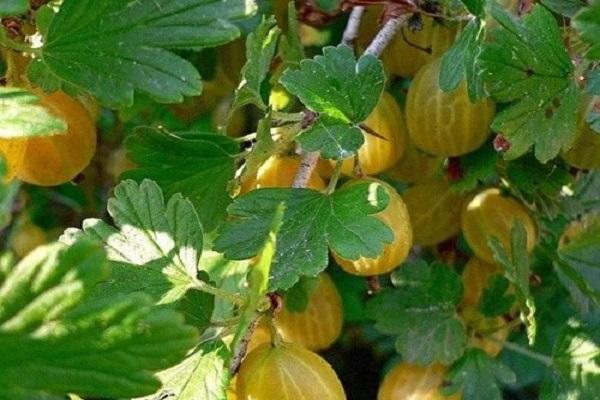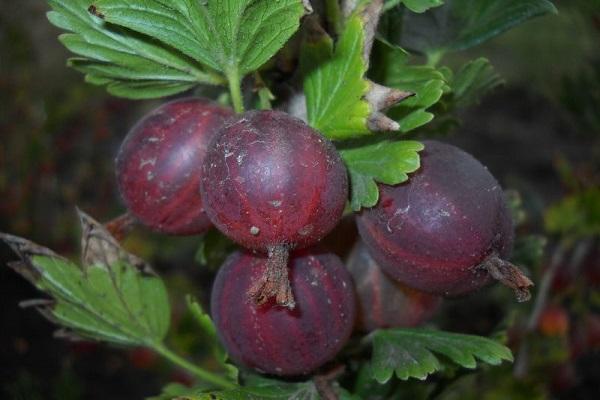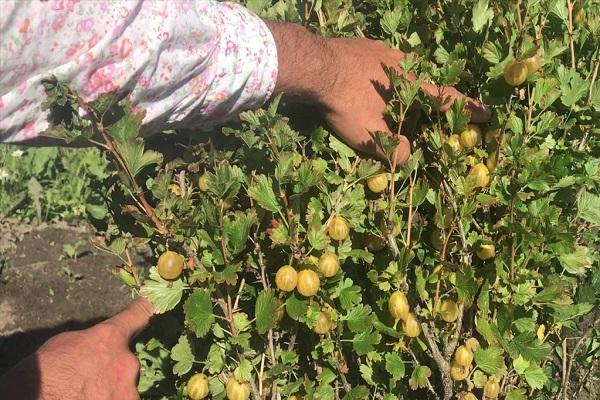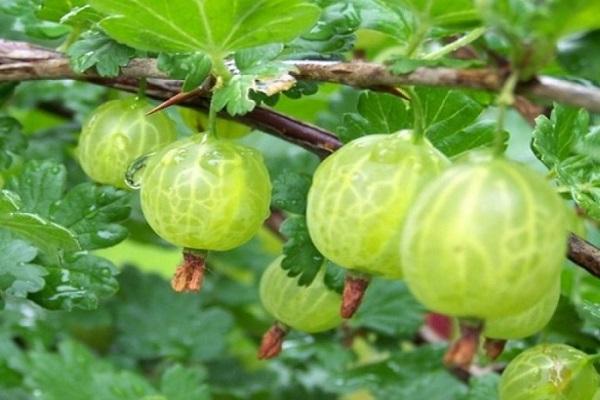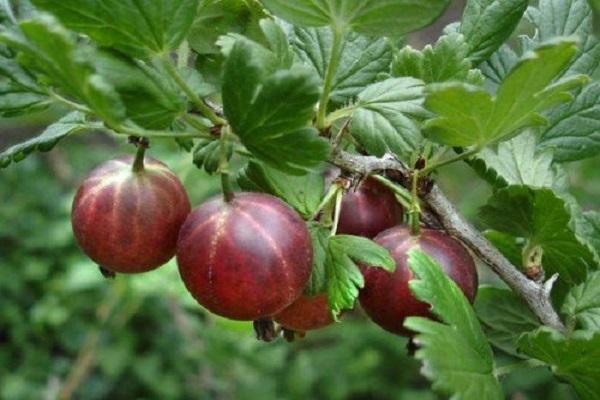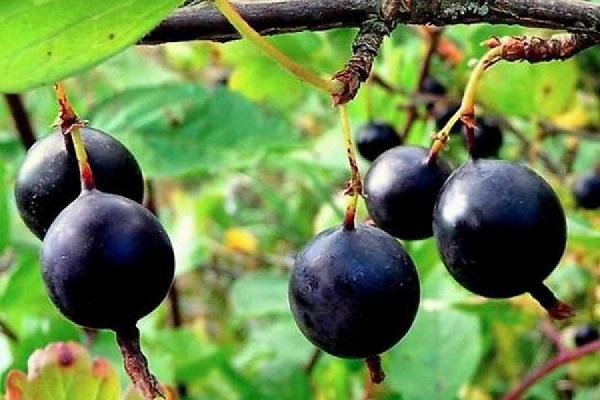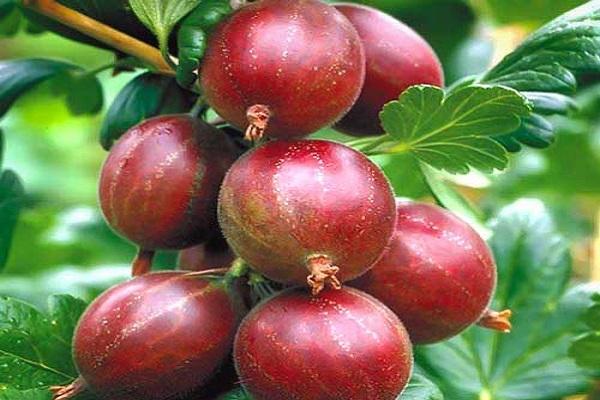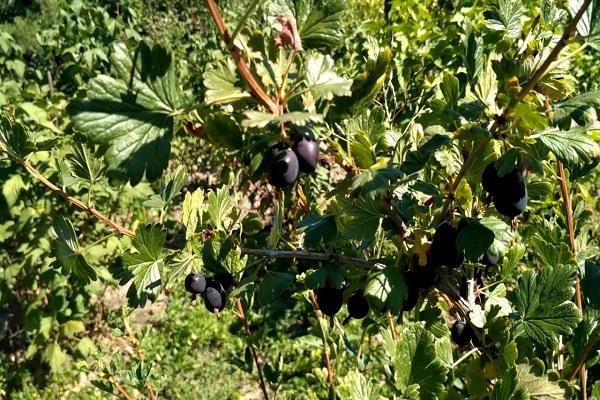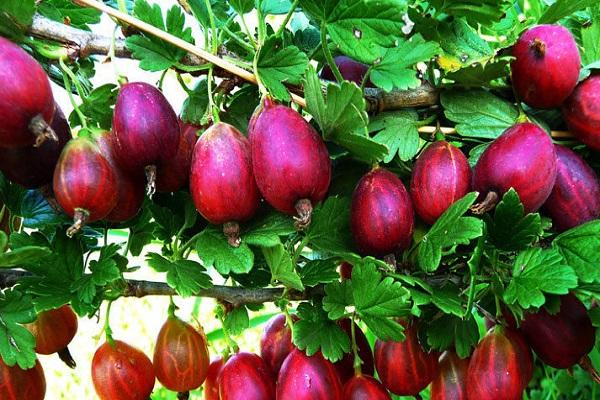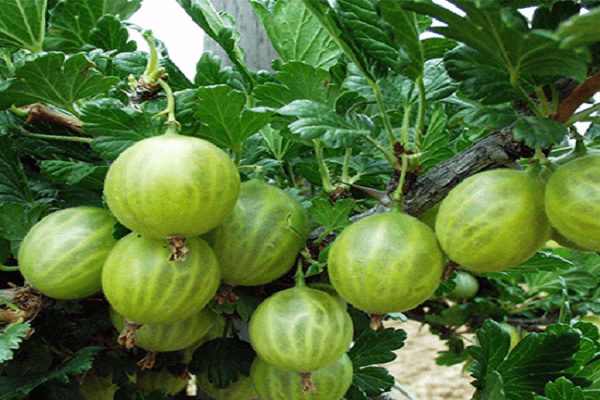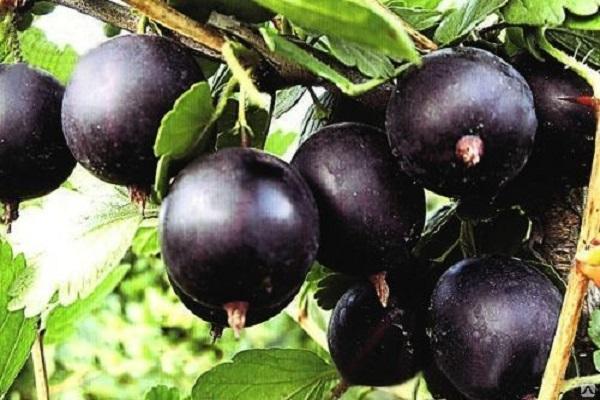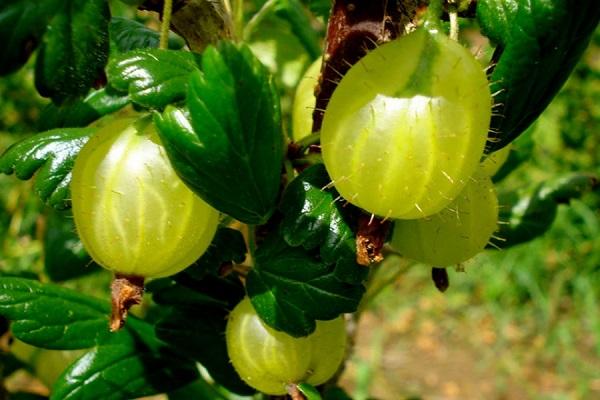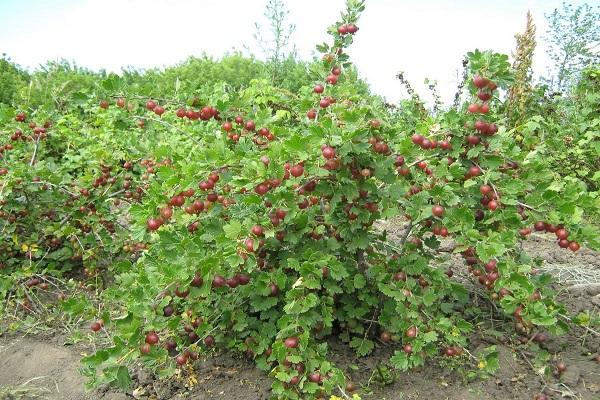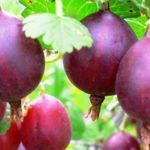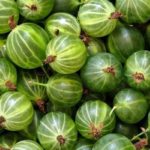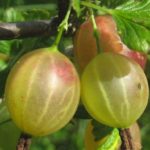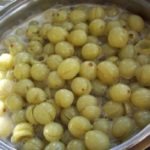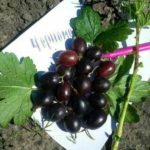When choosing the best gooseberry variety for the Moscow region, take into account the characteristics of the plant, as well as the requirements for the crop. Berries can be of different sizes, bushes without thorns or with them - all this plays a role in choosing the type. It is difficult to guess what is ideal for the Middle Zone, especially if the gardener is faced with a similar problem for the first time. To reap a decent harvest, you will have to study the characteristics of gooseberries and their characteristics.
- The most popular varieties planted in the Moscow region
- Kolobok
- Amber
- Grushenka
- Eaglet
- Spring
- Anniversary
- Malachite
- Classification of varieties by ripening time
- Early
- Average
- Mid-late
- Late
- Thornless crops for the Moscow region
- Thornless gooseberry
- Ural thornless
- Northern captain
- African
- The largest fruited varieties
- Defender
- Candy
- Cooperator
- Leningradets
- Low temperature resistant
- Beryl
- Krasnoslavyansky
- Belorussian
- Consul
- Ural emerald
- Commander
- Disease resistant
- The best yellow and yellow-green varieties
- Russian yellow
- Altai license plate
- Honey
- New types of gooseberries for the Moscow region
- Features of planting and caring for gooseberries in the Moscow region
The most popular varieties planted in the Moscow region
When choosing a gooseberry variety with resistance to powdery mildew in the Moscow region, summer residents give preference to certain varieties of the plant because they have the necessary characteristics. Each farmer has his own “favorites”; let’s look at the main varieties that are planted in the middle zone.
Kolobok
Large-fruited gooseberry, distinguished by organoleptic characteristics and “fleshy” pulp. Tasty in its characteristics, it successfully withstands low temperatures and temperature changes. The average weight of a berry is 7 grams. The plant has thorns, but they are located singly on the branches.
The disease rarely affects the plant; the pest is not afraid of it. Kolobok rarely gets sick and has good immunity. Residents of the Middle Zone can choose this gooseberry; in the fall it will delight you with large red fruits with a burgundy tint.
Amber
Spring is the right time to plant such a shrub in the ground; it has a high yield percentage, but its branched crown is tamed by multiple thorns. The large gooseberries (berries) ripen early, the yellow tint and sweetness in taste are why gardeners love these berries.
As for the characteristics, the plant is not afraid of frost, bears fruit well and rarely gets sick.
Grushenka
It was included in the rating due to its good characteristics; the description suggests that the plant has the following advantages:
- Rarely gets sick and is resistant to most diseases.
- Tolerates temperature fluctuations well.
- It will please you with its specific shape; the fruits turn red as they grow and acquire a characteristic brown tint.
The fruits are not impressive in size; on average, their weight does not exceed 5 grams. Summer residents prefer this variety because of its resistance to the vagaries of weather and pests, as well as its good yield.
Eaglet
Early, in terms of yield, thornless, with dark, almost black and medium-sized fruits, weighing 6 grams. When the berries ripen, they acquire a sweet, pleasant taste, for which they have earned recognition from gardeners.
Fruit rot and frost will not harm the plant; it bears fruit every year and the yield is high.
Spring
Suitable for those who are not ready to care for plantings; such a shrub does not require serious energy expenditure from the gardener. It can be planted in the ground without fear that there will be no harvest, since gooseberries bear fruit even in extreme conditions.
The berries are shaped like an oval and have a yellow tint mixed with green; have a sweet taste. The fruits are well suited for preparations; they can also be eaten fresh.
If you care for the plant, the size of the berries will reach 8 grams, without such procedures - 5 grams.
Anniversary
It is recommended to grow such gooseberries in order to obtain large fruits, ideal for transportation and storage.
A medium-sized shrub with small thorns and a crown that actively bears fruit, it is loved by summer residents.It bears oval-shaped berries with a yellow tint, which have a sweet taste with a pleasant sourness.
Malachite
It was developed in 1959 through breeding experiments. Malachite is relatively small in size; the bush reaches a height of 1 meter 30 centimeters.
The crop bears fruit well and produces medium-sized berries. There are no serious problems during transportation and storage.
Malachite has a slight shine, its pulp is juicy, with pleasant sourness and sweetness.
There are other varieties of shrubs that can be grown in the Moscow region, a lot depends on the preferences of the gardener, as well as the willingness to provide appropriate care for the plant.
Classification of varieties by ripening time
When choosing a shrub, take into account the early maturity of the fruits, it can be different, there are species that bear fruit early, but there are others that will not immediately delight you with sweet berries.
When carrying out classification, the following indicators are taken into account:
- origin of culture;
- indicator of yield and ripening speed;
- average parameters of berries;
- taste characteristics, color and characteristics of the pulp;
- indicators of plant resistance to major pests and diseases.
Early
The following types differ in similar characteristics:
- Eaglet.
- Amber.
- Russian.
- Vladil.
- Spring.
Three varieties from the list have already been described earlier, so let’s pay attention to two other varieties:
- Russian - ripens in mid-July, produces large-sized fruits that have a bright, red hue.
- Vladil - despite its popularity, it is not distinguished by large berries, they are medium in size, up to 5 grams. The branches are practically devoid of thorns.
Average
The list of similar ones should include:
- Krasnoslavyansky - fruit weight reaches 7 grams, the pulp is pleasant, dense, with sweetness and sourness. Medium-sized bushes and branches studded with thorns.
- Beryl - gooseberry fruits of this variety reach 7.5 grams, they are green, with a pleasant sweetness in taste. The main advantage is the dessert taste.
- Northern captain is a self-fertile, large bush that has good immunity. The dark burgundy berries reach a weight of 5 grams.
Mid-late
The list should include the following varieties of gooseberries:
- Harlequin;
- African;
- Beryl.
Late
Such plant varieties often have a strong immune system and rarely get sick, however, everything is relative. It is believed that berries that ripen late are not afraid of frost. Let's consider several varieties:
- Date - a spreading and large-sized bush attracts gardeners with the size of the fruits - they can reach 15 grams. But at the same time, you will have to regularly thin out the gooseberries, removing shoots.
- Grushenka - this variety has already been written about; its advantages are the following qualities: frost resistance, disease resistance, lack of thorns.
Thornless crops for the Moscow region
The absence of thorns is regarded by many gardeners as an advantage; among such gooseberries there are leaders and outsiders.
Thornless gooseberry
It is not afraid of powdery mildew, has a very neat crown, the branches stretch upward, despite its high growth, the gooseberry tolerates frost quite well.
Ural thornless
It has one drawback - it can begin to form an ovary early, which will lead to loss of yield. Despite this drawback, the species is distinguished by increased frost resistance and sweet fruits.
Northern captain
It shows good yield; with proper care, one bush can collect up to 12 kilograms of berries with a sweet taste and characteristic sourness.
African
It will have to wait for it to start bearing fruit; the wait will last no more than 3 years. As a result, the patient summer resident will be pleased with the Afghani with dark fruits with a sour taste.
The largest fruited varieties
If you choose large-fruited gooseberry varieties for the Moscow region, you can’t go wrong, since such plants bring a good harvest. The average size of the berries is 5 grams or more; they have a pleasant taste and firm flesh. Let's look at some of the brightest representatives of this group.
Defender
It is distinguished by fruits whose weight reaches 10 grams, while the ripening berries have a dark, almost black tint.
Candy
The berries do not ripen early, they have good organoleptic characteristics. From one bush it is possible to collect up to 5 kilograms of harvest.
Cooperator
The shape of the fruits is pear-shaped, they taste sweet, with a red tint, the average size of the berries reaches a weight of 7 grams.
Leningradets
If you decide to plant one gooseberries on the plot, you will be able to collect fruits weighing 10 grams or more, and the crop yield will also surprise you.
Low temperature resistant
Delicious varieties of gooseberries for the Moscow region, which are not afraid of the cold, are rare. A number of cultural varieties should be included in the list of similar ones.
Beryl
Thorns can only be found in the lower part of the bush. With proper care, you can harvest 9-10 kilograms of harvest from one bush.
Krasnoslavyansky
If you plan to grow gooseberries on your plot that are not “scared” of frost, and at the same time bear sweet and large fruits, then give preference to this variety.
Belorussian
It will delight you with its resistance to cold weather - it is not afraid of frosts down to 30 degrees. At the same time, as a plus, you can indicate a good yield indicator and fruit size.
Consul
Or Senator - this variety of gooseberry easily tolerates frosts down to almost 40 degrees. Over the years, the plant's productivity only increases.
Ural emerald
It easily tolerates cold down to -37 degrees, its fertility is surprising, and the average size of the berries reaches 8 grams.
Commander
In addition to resistance to frost, the variety can boast of large fruits, with thin skin and a taste reminiscent of black currants.
Disease resistant
Planting such plants allows you to avoid crop loss. In most cases, gooseberries, depending on the type, of course, have good immunity.
Among such plants, preference is given to:
- Ural grapes;
- Salute.
The best yellow and yellow-green varieties
All the varieties listed below are united by a combination of qualities, but the “emphasis” is on the shade of the berries, for some summer residents this is important.
Russian yellow
This gooseberry variety tolerates temperature changes easily; its peculiarity is the presence of a waxy coating; the size of the berries reaches 6 grams.
Altai license plate
It can scare away with its thick thorns, but it attracts with its good yield; in a good year, it is possible to collect up to 20 kilograms of berries from the bush.
Honey
Suitable for making royal jam, it can also be used in other preparations.But do not allow the fruits to overripe, otherwise they will lose their taste.
New types of gooseberries for the Moscow region
Sweet gooseberries for the Moscow region are successfully grown on their plots by many summer residents, but they give preference to old, proven species, not paying attention to new products, which include:
- Belarusian sugar is also considered large-fruited.
- Cossack - breeders were lucky enough to meet this variety in 2006.
- Sirius - has no thorns.
- White nights - was bred only recently, in the early 2000s.
Features of planting and caring for gooseberries in the Moscow region
Planting and care will not require specific manipulations; the gardener will have to water and feed the plant, but such procedures should be carried out during the 2nd year of its life. It is better to plant gooseberries in spring, in a prepared place.
Attention! The berries will need sunlight, but it is better to protect them from scorching rays.
If you fertilize, use organic matter - compost and mullein will do. Good results are observed when applying nitrate and other mineral fertilizers.
When choosing a gooseberry variety, take into account the features, follow the basic rules of planting and caring for the plant - this will increase the yield.
In terms of care, gooseberries cannot be called whimsical, but as they grow, fruiting may change. Much depends on the plant, its characteristics, as well as the gardener’s ability to properly care for it. Only years of experience will allow the gardener to optimize the process and get a decent result.

